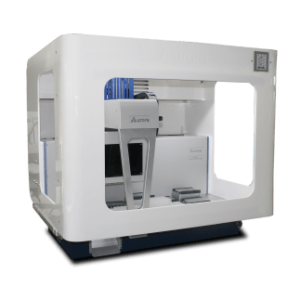DNA Sequencing refers to the process of determining the nucleic acid sequence. Sanger sequencing is one of the old methods still used in sequencing. Frederick Sanger and collogues introduced “dideoxy” chain-termination method in 1977 and method was eventually used to sequence the entire human genome. After the completion of the human genome project and to ease the sequencing, next generation sequencing (NGS) machines were emerged.
Sanger sequencing
In summary, in Sanger sequencing, each sequencing reaction consists of a sequencing primer, deoxynucleotides (dATP, dCTP, dGTP, dTTP), DNA polymerase, the DNA sequence of interest, and labeled dideoxynucleotides (ddATP, ddCTP, ddGTP, ddTTP). A much smaller proportion of dideoxynucleotides is used than the amount of deoxynucleotides. Incorporation of dideoxynucleotides to the DNA chain stops further addition of any other nucleotide, so each fragment ends with a labeled nucleotide. Then, capillary gel electrophoresis separates the DNA sequences according to their length and a laser excites the label on the nucleotide at the end of each sequence and generates a chromatogram. The chromatogram displays the fluorescent peak of each nucleotide and the order of nucleotides in the sequence.
Next generation sequencing
After 13 years, human genome project was completed in 2003. Human genome project was sequenced using Sanger sequencing and cost $3 billion. After completion of the human genome project with this huge cost and length, the need for improvement in the sequencing technologies led to the emergence of the next generation sequencing. Since then, different sequencing companies developed various high- throughput sequencing methods. For instance, Illumina developed sequencing by synthesis, Pacific Biosciences presented single-molecule real-time sequencing, Ion Torrent sequencing introduced ion semiconductor and SOLiD sequencing developed sequencing by ligation. As of 2019, Illumina, Qiagen and ThermoFisher Scientific are corporate leaders in the development of high-throughput sequencing products. Currently, Illumina owns 90% of the sequencing market with high fidelity (>99.9% accuracy).

The capacity to sequence all the 3.2 billion bases of the human genome (at 30× coverage) has increased dramatically since the 1990s. The introduction of the Illumina Genome Analyzer system in 2005, enabled us to sequence 1.3 human genomes annually. Nearly 10 years later, with the Illumina HiSeq X Ten fleet of sequencing systems, the number has increased to 18,000 human genomes a year. Furthermore, introduction of the high-throughput sequencing systems has led to the dramatic decrease in the cost of sequencing. Completion of the human genome project took 13 years and $3 billion in cost but currently we can sequence over 45 human genomes in a single day for approximately $1000 each.
Applications of next generation sequencing
In recent times, has became a significant technological advance in the practice of diagnostic and clinical medicine and led to a better understanding of genetic diseases. Single- and multi-gene panel tests, whole-genome sequencing (WGS), whole-exome sequencing (WES) and cell-free DNA for non-invasive prenatal testing are among molecular tests which use sequencing technology. Moreover, targeted exome sequencing is becoming increasingly popular in oncology for assessing the full sequence of cancer-related genes. Furthermore, next generation sequencing is used for RNA-sequencing (RNA-seq) and can also be applied for circulating tumor RNA (ctRNA) discovery. Additionally, ChIP-sequencing (ChIP-seq) which is a combination of chromatin immunoprecipitation (ChIP) with next generation sequencing helps to analyze protein interactions with DNA. Other applications of next generation sequencing are in evolutionary biology, forensics, transplant rejection and detection of pathogens.
Automated NGS Library Preparation
One of the time consuming and laborious steps in next generation sequencing is the library and sample preparation. During library preparation, adapters are ligated to both ends of the fragmented genomic DNA. Many scientists are turning towards automated liquid handling workstations to automate their library preparation for next generation sequencing analysis. Aurora Biomed Inc. provides automation systems for next generation sequencing library preparation and these systems are already validated for 1) No evidence of cross-contamination, 2) High reproducibility in both library yield and variants calls and 3) Good quality library yield.
Learn more about automating next generation sequencing library preparations.



